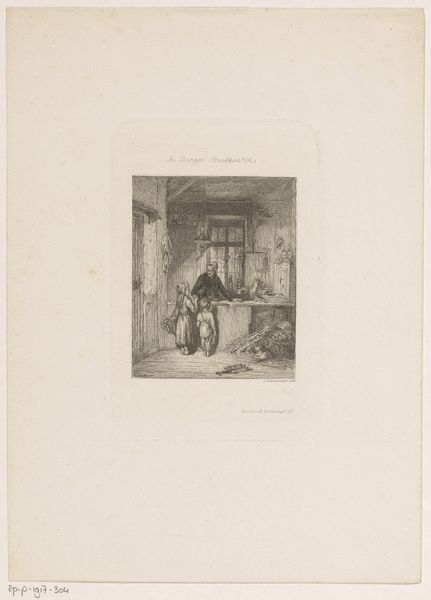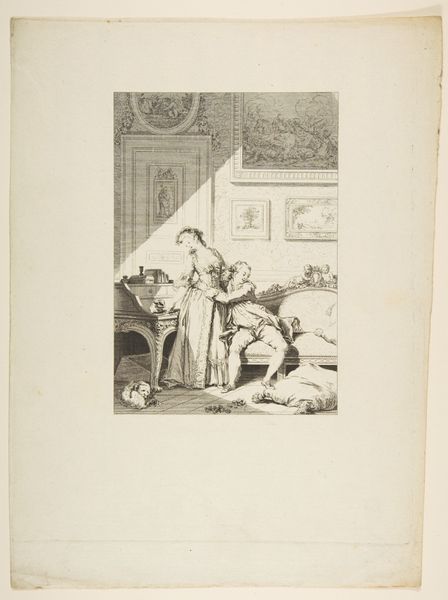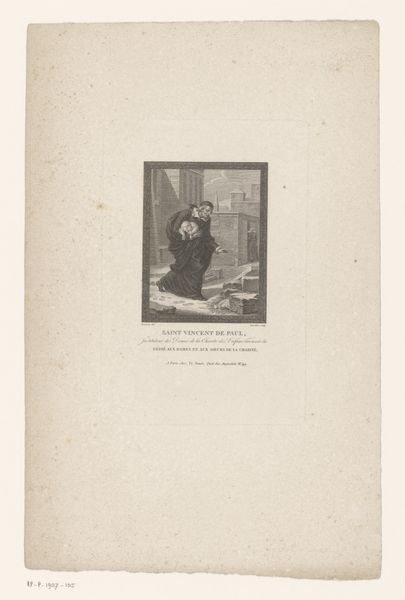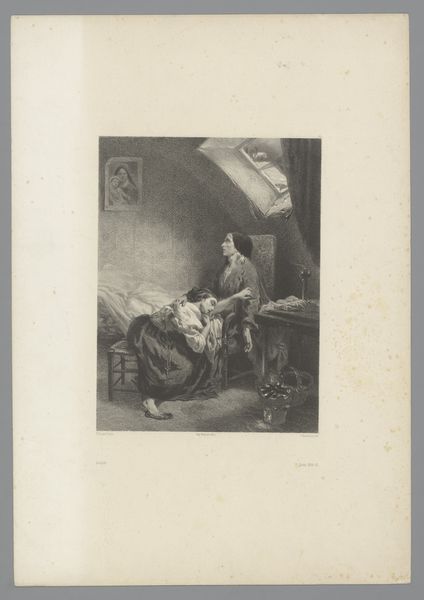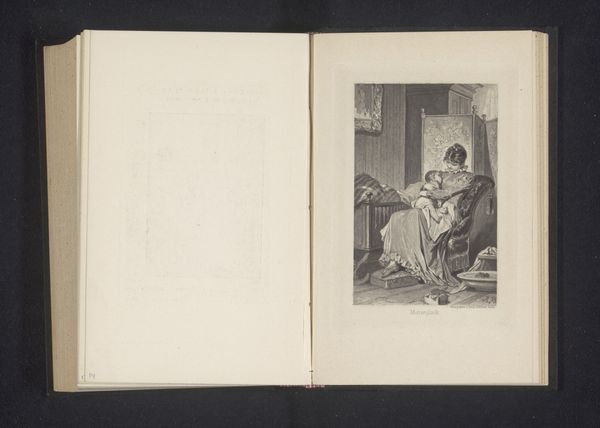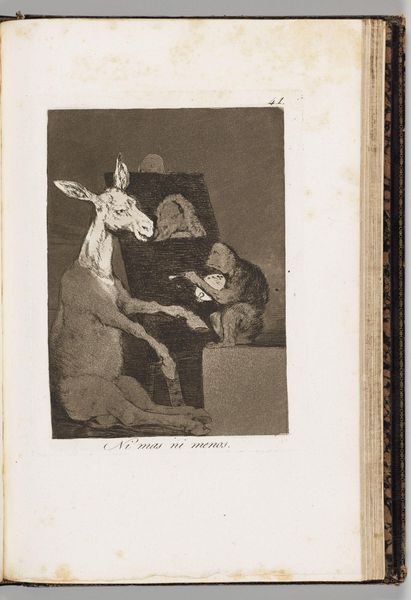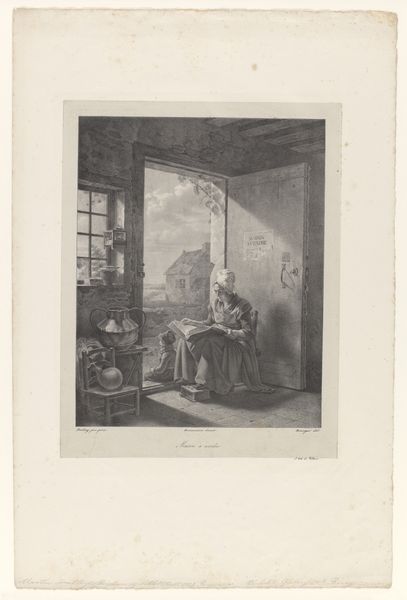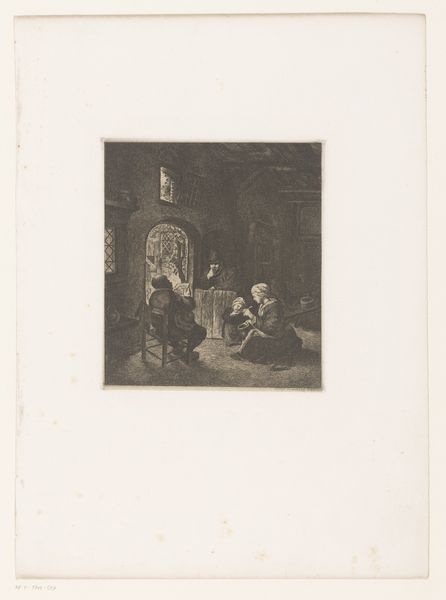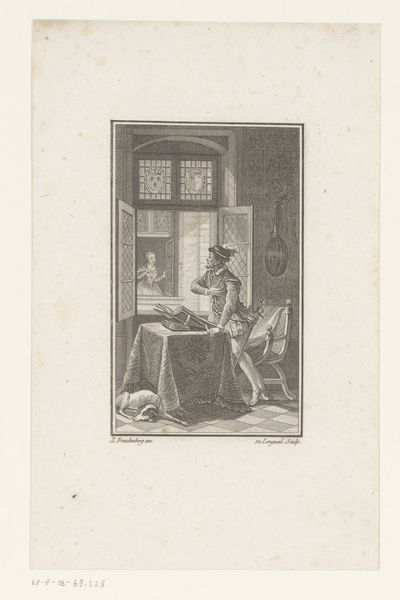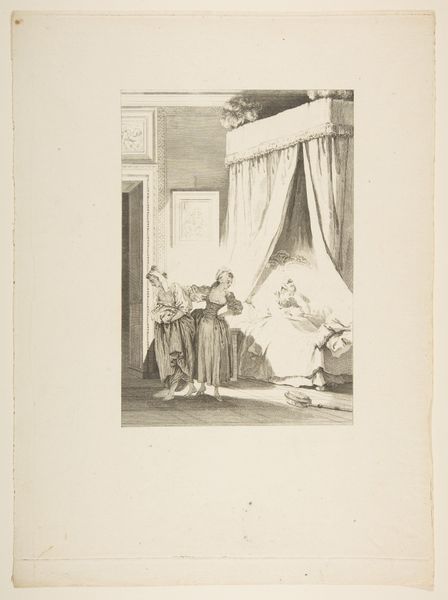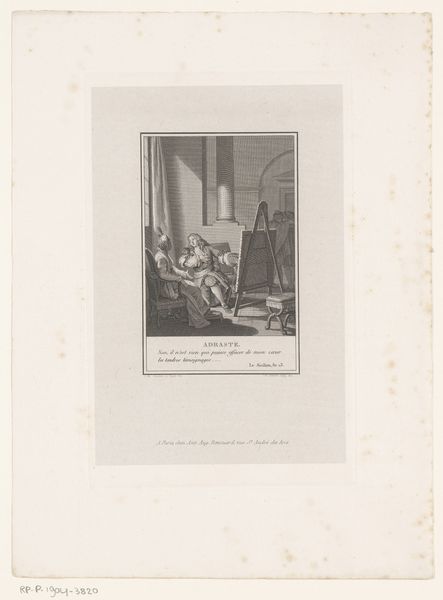
Dimensions: height 218 mm, width 147 mm
Copyright: Rijks Museum: Open Domain
Curator: We’re looking at "Man bij een stervende vrouw," or "Man with a Dying Woman," a print made by Noach van der Meer II around 1785, currently residing here at the Rijksmuseum. Editor: My first impression is a somber stillness, despite the clear narrative being presented. The gray tones amplify the sadness of the scene, giving the entire room a feeling of impending loss. Curator: Absolutely. This print encapsulates the genre paintings so common in the Romanticism movement; art meant to elicit emotional response. The etching itself provides commentary on illness and mourning. The setting appears modest, suggesting it's an intimate and personal scene. The man is in anguish. Editor: I see it similarly, but think of the institutional contexts shaping such displays of grief. Death and mourning practices underwent significant shifts during the 18th century. Public displays of mourning and commemorative objects grew in importance. Consider the role gender plays here, the woman lies helpless, and the man seems lost. Are they victims of circumstances? Did he have her consent for portraying her like this? Curator: It raises important questions about representation and the gaze, certainly. During this period, displays of sensibility and emotional intensity became increasingly linked with notions of virtue and morality, particularly within the domestic sphere. Van der Meer situates this work squarely within that tradition. Look how the architectural setting almost amplifies the claustrophobic sense of helplessness. Editor: It almost feels exploitative through our contemporary lens, despite it’s original goal perhaps. The window seems to offer an exit from their world. The image asks us to consider who controls the narrative surrounding death, who profits, who are included in its representation. Curator: I concur that examining these questions leads us to consider power structures that still resonate today. Van der Meer’s rendering of grief and vulnerability remains unsettling, forcing us to confront our discomfort and complicity with a culture that has aestheticized loss. Editor: Precisely. By exploring it’s historical framing, and ethical considerations in depicting suffering we see what it meant in that time, and what that time means to us now.
Comments
No comments
Be the first to comment and join the conversation on the ultimate creative platform.

